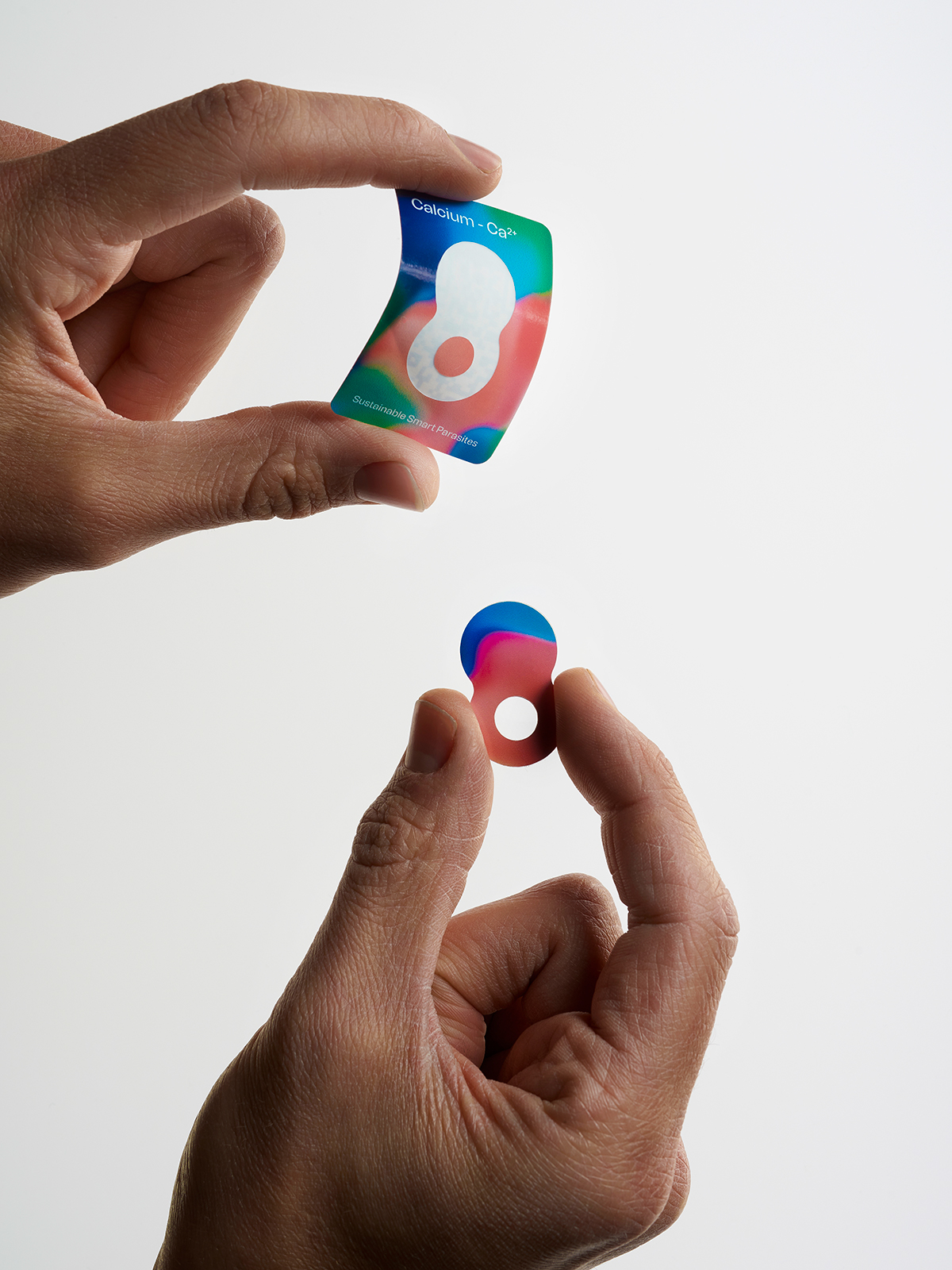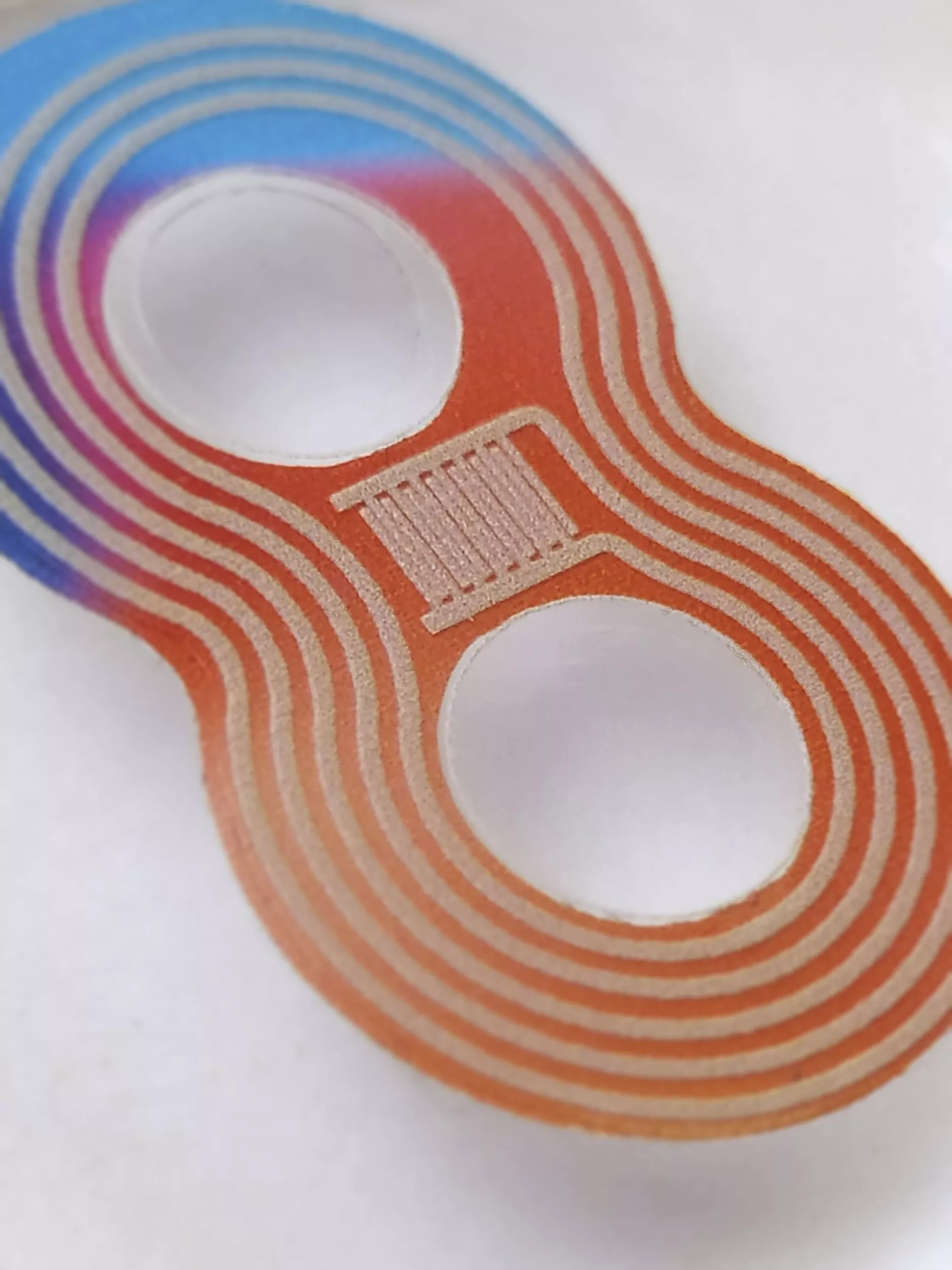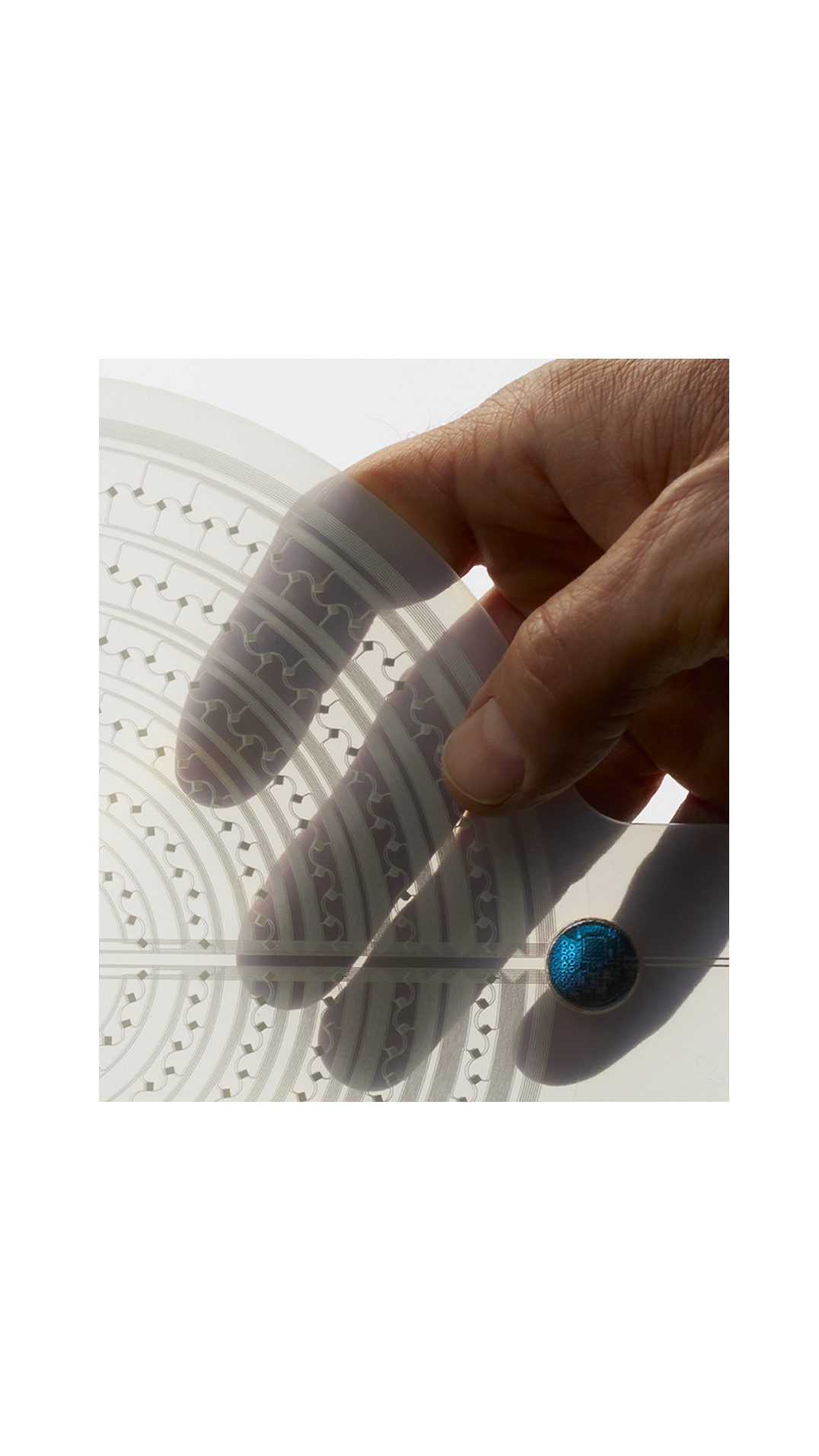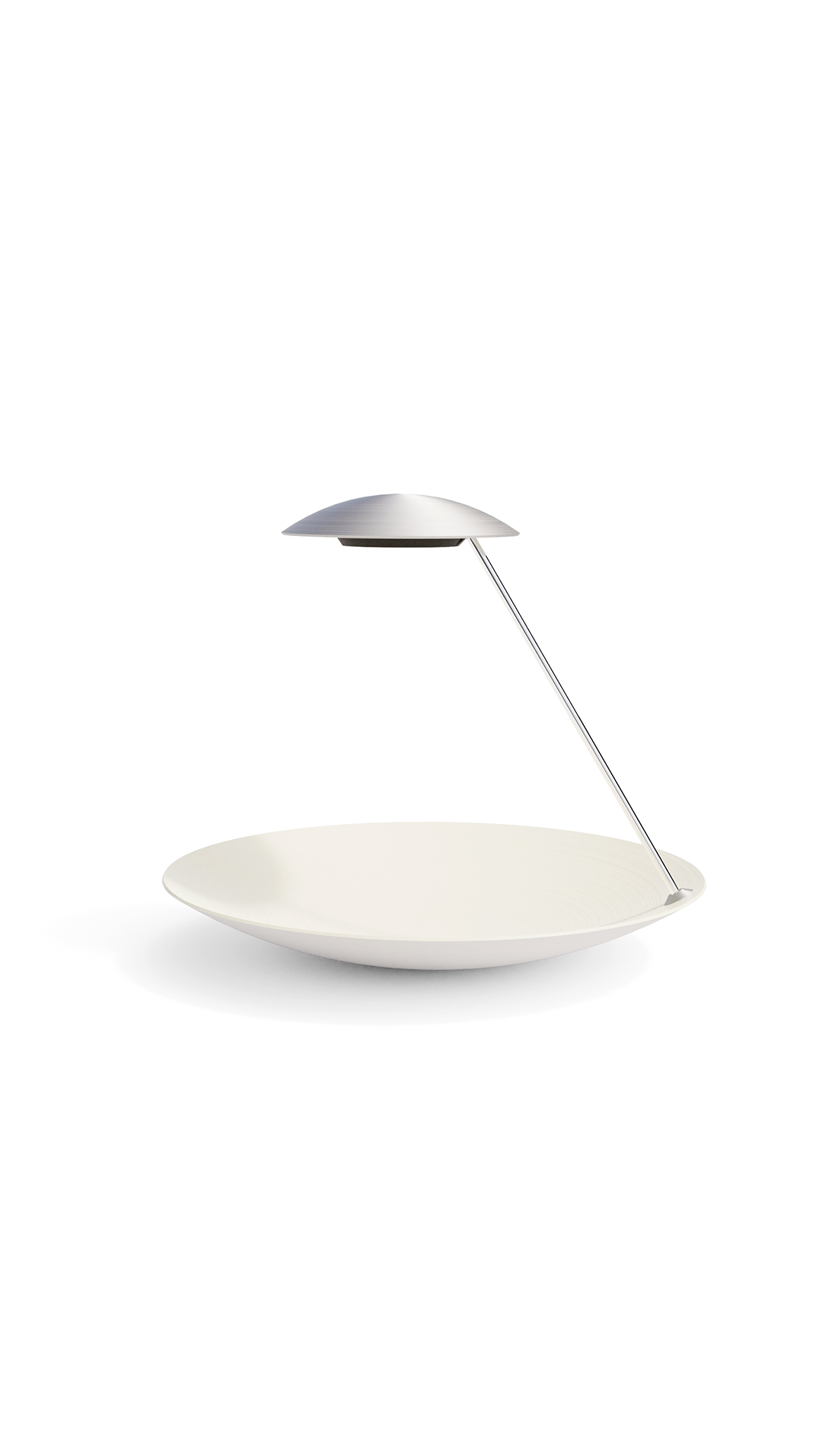Sustainable Smart Parasites (SSP) aims to create objects that extend our human capacity to connect with one another, in an energy-conscious way. Using printed electronics*, the project explores the benefits of the connected world we live in, without relying on the vast power outputs that it currently requires.
Envisioning the future of smart sustainable parasites – a new approach in the design of technology-enabled sustainable objects and systems.
Over the last decade, the idea of “connectivity” and its more profound implications popped up, bringing unprecedented opportunities to reinterpret the surrounding of modernity. Interconnected devices are redefining the interaction paradigms between human beings and their bodies, the object they own, and the space they belong to. However, the human body, traditional objects, and the space are not inherently interconnected and necessitate an “extension”, to enhance their functionalities. Since such extensions only have meaning and function when attached to the object they need to improve, they can also be defined as ‘parasites’.
→ Read more
The evolution of parasites into a different class of technology-enabled objects or smart parasites is inevitable. Still, it carries a series of criticalities which have not been entirely addressed so far by either industry or the scientific community. One of the most significant is related to sustainability. The SSP project challenges current perspectives of printed electronics and envisions and defines new functions, methods, and production tools for future Smart Parasites that are environmentally friendly, have a low carbon footprint for all its lifecycle and are energy conscious with low production costs. To pursue these ambitious goals, we exploit the recent advances in printed electronics and ad-hoc manufacturing to produce devices and concepts based on enhanced electronic functions. We are facing three ambitious goals by employing a design-driven approach, with a strong synergy between design and technology experts. First, we aim to obtain prototypes of sustainable smart parasites in the three categories: human body parasites, object parasites, and space parasites. Secondly, we will use the expertise and know-how gained through the project to create novel tools and equipment for the environmentally friendly fabrication of smart parasites. Finally, the research on structural and functional materials will lead to the definition of a database of materials, where the aesthetic and functional properties of the materials are classified and described. We believe that the successful actuation of this project will pave the way to an entirely new approach to the design of technology-enabled objects and sustainable systems.
An interdisciplinary research project
Free University of Bolzano
Faculty of Design and Art
Faculty of Science and Technology
Year
2018 – 2023
Team
Nitzan Cohen
Ignacio Merino
Prof. Paolo Lugli
Prof. Luisa Petti
Dr. Martina Aurora Costa Angeli
Dr. Mallikarjun Madagalam
Dr. Christian Ebner
Dr. Giuseppe Cantarella
Photography
Body Sensors
A print for the body
What if you could learn what’s happening inside your body just by looking at your skin?
This battery-free biodegradable skin patch instantly retrieves and interprets physiological data from the body. Although simple battery-free disposable body sensors such as glucometers or thermometers already exist, these printed electronic patches make this process highly intuitive and environmentally friendly at a lower cost. Body-measuring sensors could be integrated into a daily routine as a health and lifestyle accessory. It could also aid emergencies or be used in geographical and socio-economic contexts where no other solution might be affordable or feasible.
A simple gesture with a mobile phone activates this battery-free device to take the appropriate on-demand measurement, making it instantly available on a designated App.



The skin patch is printed directly on the carrier membrane and uses a simple printed electronic architecture with a printed coil as an antenna for energy and data transmission. Printed interdigital capacitive sensors, each coated with a different polymer-sensitive film, also known as functionalized material, act as a sensor. Finally, a tiny RFID chip serves as the communication interface.
Current sensors can measure the level of certain substances in our body, such as lactate, glucose, sodium, calcium and potassium—the technology analyses the chemical content of the skin moisture to enable measurements. In the case of Blood Alcohol Concentration (BAC), the organic printed sensors can measure the ethanol vapours emanating from the skin.
Categorically, personal medical devices, with a transient electronic approach, are printed directly on a carrier membrane (i.e. paper), which allows battery-free monitoring of different bodily values. Sensor(s)-to-network communication and LPWAN (low-power wide-area network) enable simple and intuitive integration of mobile phones as the active computer of the system.






Through the use of RFID technology which can transmit power and data, a combination of simple components makes this instrument a passive device that only works at the user’s request. For example, to wake up the device, bring a phone close to the device, and the system will activate.


The design featured here is a conceptual prototype based on real data, specifications, and application perspectives.










Publications
Laser-Induced, Green and Biocompatible Paper-Based Devices for Circular Electronics
The growing usage and consumption of electronics-integrated items into the daily routine has raised concerns on the disposal and proper recycling of these components. Here, a fully sustainable and green technology for the fabrication of different electronics on fruit-waste derived paper substrate, is reported. The process relies on the carbonisation of the topmost surface of different cellulose-based substrates, derived from apple-, kiwi-, and grape-based processes, by a CO2 laser.
Cantarella G, Mallikarjun M, Merino SanchezFayos I, Ebner C, Ciocca M, Polo A, Ibba P, Bettotti P, Mukhtar A, Shkodra B, Inam AKMS, Pour Yazdan A, Paganini M, Tiziani R, Mimmo T, Cesco S, Münzenrieder N, Petti L, Cohen N, Lugli P.
Journal for Advanced Functional Materials / 2023
Fabrication and characterization of flexible planar electrodynamic loudspeakers. Conductive spirals are fabricated on a flexible and transparent polyethylene terephthalate substrate via screen printing. Different geometries (circular and rectangular) and sizes of the conductive spirals are investigated to understand their impact on the performance.
Madagalam M, La Torraca P, Ahmed M, Douaki A, Merino SanchezFayos I, Cohen N, Petti L, Lugli P.
Proceedings of the 6th IEEE Electron Devices Technology & Manufacturing Conference (EDTM) / 2022
Since its first discovery in 2014, laser-induced graphene (LIG) has gained increasingly attention as a simple and low-cost alternative to printing techniques, which instead require additional materials such as functional ink or adhesive layers. While there are several works on LIG supercapacitors, gas sensors, and triboelectric generators, this method is still very unexplored for antennas, especially if realized on eco-friendly paper substrates.
Ahmad M, Cantarella G, Costa Angeli M, Madagalam M, Ebner C, Ciocca M, Riaz R, Ibba P, Petrelli M, Merino I, Cohen N, Lugli P, Petti L.
Proceedings of the International Flexible Electronics Technology Conference (IFETC) / 2021

